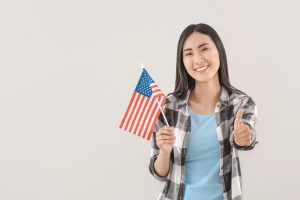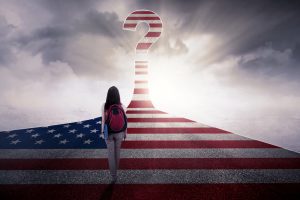Asian Americans, as well as those who immigrate from Asia to the West are a multicultural group that cannot be categorized completely as one group. In many cases, the general assumption of Asian equates to those of the Orient, but Asia encompasses far more than the mere Orient Japanese, Chinese and Korean cultures, but also India and many other locations throughout the massive continent. Hence when referring to Asian Americans, it is to be understood as Asia as a whole and not merely those of Oriental descent. Regardless, Asian Americans share many similar traits, religious ideals and cultural and family structures. In addition, they have also faced there own oppression at home as well as within the West and United States. Grief counselors who wish to help Asian clients need to have a full understanding of their culture and ways of expression, in addition to understanding historical oppressions.
Please also review AIHCP’s Grief Counseling Certification and see if it matches your academic and professional goals.
The Asian American and Migrant

Like any migrant group, Asian Americans face unique challenges during acculturation, as well as unique challenges from their homeland. Many Asians immigrated to the United States via the west coast in the 19th Century, as well as those who have fled communist and tyrannical regimes in the 20th Century. There are numerous migrants from China, Vietnam and Korea since the mid century who fled oppressive regimes, as well as government persecution of minorities in India and Southeast Asia. Within the West, Asian Americans have met there own discrimination especially within the United States. In the 19th Century, many Asians were commonly mocked and ridiculed and left isolated within their own districts. During the World War II, many Asian Americans were collected into determent camps by the US government. Many Oriental Americans, especially of Japanese descent had to prove their American values and were treated as traitors or spies. Even today, various racist slurs or attributed to Asian Americans of different descent and most recently, many were unjustly targeted for the spread of Covid19.
Ironically, many Asians also receive “positive” stereotypes that can also be damaging, such as the assumption all Asians are smart and receive good grades. While education is key driving force within Asian culture, these reinforced stereotypes when applied can cause confusion and distress to the particular individual.
In addition, Asian Americans and migrants face acculturation issues within their own unique family structures and Western society. Asian American cultural structures place greater value on collectiveness and needs of the family. It submits to a stronger hierarchal structure that places the individual at the need of the family. Many personal and individual decisions made by Westerners are considered family business in Asian families. Hence obligation to family, obedience, and arrangements even in marriage are considered social necessities (Pederson, 2018. p. 122). In addition, Asian culture emphasizes humility and modesty when speaking of self and are far less lenient with outsiders than family members in these regards. In addition, self restraint and harmony are prized more than self disclosure and independent choices (Pederson, 2018, p. 122). With this higher respect of authority, many Asian Americans have difficult times understanding American and Western culture and its demand of freedom, pride, rebellion and personal choice.
Hence within this group, there can be a struggle between first and second generation family members as well as integration with less traditional Asian families via marriage. This can lead to depression and anxiety for members who need their family structure and support but wish to express themselves outside the cultural norm of their family.
Counseling the Asian American
Many Asian Americans who experience better acculturation seek counseling more so than those with worst experiences. Of course tradition, language barriers and other cultural factors can play a role in willingness to seek mental health help. Overall, Asian Americans are considered to under utilize health services (Pederson, 2018, p. 129). Asian Americans, however, experience the same general mental issues all human beings experience despite the “model minority” stereotype (Pederson, 2018, p. 130). Like many cultures, Asian Americans sometimes prefer a counselor of their own culture and race to help foster understanding of cultural issues. Pederson points out that racial matches in counseling do equate to increased utilization and duration of therapy (2018, P. 134). Racial match while able to grant better credibility within the counseling relationship is not always ideal or available and this again leads to the importance of counselors to be multicultural aware. Of course with so much discussion about racism, many sometimes wish to turn a blind eye to race itself but turning one’s eye to race and culture ignores the fabric of the client sometimes him or herself. Ignoring hate and removing it is the key, not denying differences that are integral to who someone is. Hence counselors need to be aware of the differences and through this understanding be competent to bridge the cultural difference between counselor and client. This will ultimately help population groups, such as Asian Americans, become more comfortable with a non-Asian counselor. This involves Western counselors having a stronger understanding of authority and family structures within Asian American homes and better apply that knowledge to the counseling dynamic. Interesting enough, it is important to discuss the counseling outcome and dynamic with Asian Americans. Normally, Asian Americans expect answers from experts. They wish to be told what to do and how to follow through. The overall view for many is that counseling is directive and authoritarian. Many expect more directness in what to do (Pederson, 2018, p. 128). This is why is it important to review expectations of mental therapy and the importance of the process of self discovery and healing instead of the counselor taking upon a role of authority.

Again noting that no two people are alike, counselors can still have a base understanding of Asian culture when working with a Asian client. First, it is important to note that many Asians communicate in a high context style without direct or specific references (Pederson, 2018, p. 125). In addition, many Asians do not express or communicate emotion as freely as Westerners (Pederson, 2018, p. 125). It is important to understand this because if analyzed from a Western lens only, this may appear to be hiding feelings or pathological but in reality is merely cultural. Other misconceptions can occur as well if a Western lens is utilized in call cases. If an Asian client seeks parental and family advice on every issue from employment to relationships is judged as a Westerner, then diagnosis may present a maladaptive issue, while in reality, the Asian client is performing well within his or her cultural norms. Hence it is important to have a strong understanding of the cultural emphasis of family and authority within Asian communities and how this comes into play during counseling.
One key cultural expressions within Asian communities is the issue of shame and loss of face. The fear of shame or failure or losing face and disappointing the family can be a large motivational pull for Asian clients (Pederson, 2018, p. 124). Feelings of shame upon one’s name and family is a large fear in collectivist cultures (Pederson, 2018, p. 124). Hence shame can play a role in loss, grief, as well as decisions. One may live an unhappy personal life at the expense of a living a life that spares shame upon the family name. In addition to shame and loss of face, many individuals within Asian cultures are pushed to perfection and fear failure. The more perfectionist the family structure, the far greater stressors for the individual to succeed at all costs (Pederson, 2018, p. 127). In addition to fear of shame, or depression and anxiety associated with perfectionist model families, counseling with Asians must also take into context high contextual communication styles versus lower contextual communication styles. Most Asians associate with non-verbal cues to express ideas. This helps avoid confrontation or disrespect. On the contrary, most Westerners communicate with more direct communication or low contextual communication where words are purposely used to state and communicate an issue. This can across to an Asian as direct, aggressive, or rude (Pedersen, p. 125).
Within grief, various family structures and inner frictions can cause unresolved issues during loss and death. Anytime a person exists within a culture that has expectations of the group over the self, as well as a restraint of emotion, one can expect possible grief reactions. The individual may experience depression or anxiety with one’s own life choices and then when family death occurs and also possibly feel multiple guilts if one did not do as one was told to do by the deceased. These issues need addressed in counseling to allow for proper grieving and resolution of the loss. When dealing with Asian clients, these issues may exist during grief and loss and may need addressed or at least explored to discover if the client’s family had such cultural norms.
Conclusion
Asian Americans or migrants are more than just South East Asia but also include India and outlaying areas. The culture for the most part is very family and collectivist orientated with emphasis on respect of authority. Family plays a key role in decisions. Shame also plays a key role in keeping members of the culture to performing their duties to the family. Counselors need to be aware of the cultural dynamics when working with individual clients. Pending on acculturation and family dynamics, different Asian clients will vary in how they respond to Western ideals. Regardless, grief and loss can still be impacted within family structures that dismiss emotional expression and individual freedom. Resentment and anger can build up and play a role later in loss and grief.

Please also review AIHCP’s Behavioral Therapy Certifications for Human Service Professionals as well as Healthcare Professionals. In particular, please review AIHCP’s Grief Counseling Certification and see if it matches your academic and professional goals. The program is online and independent study and open to qualified professionals. In particular, for those who are already certified grief counselors, please review AIHCP’s specialty Grief Diversity Counseling Program.
Reference
Pederson, P. et al. (2018) “Counseling Across Cultures” Cengage
Additional Resources
Huizen, J. (2021). “Asian American mental health stigma: Why does it exist?”. Medical News Today. Access here
Nagayama Hall, G. et al. (2011). “Culturally-Competent Treatments for Asian Americans: The Relevance of Mindfulness and Acceptance-Based Psychotherapies”. Clin Psychol (New York). Author manuscript; available in PMC 2012 Sep 1. National Library of Medicine. Access here
Cherry, K. (2023). “17 Mental Health Resources For Asian Americans and Pacific Islanders” Very Well Mind. Access here
Misun Kormendi, N. (2021). “Asian American mental health during COVID-19: A call for task-sharing interventions” SSM Ment Health. 2021 Dec; 1: 100006.. National Library of Medicine. Access here
